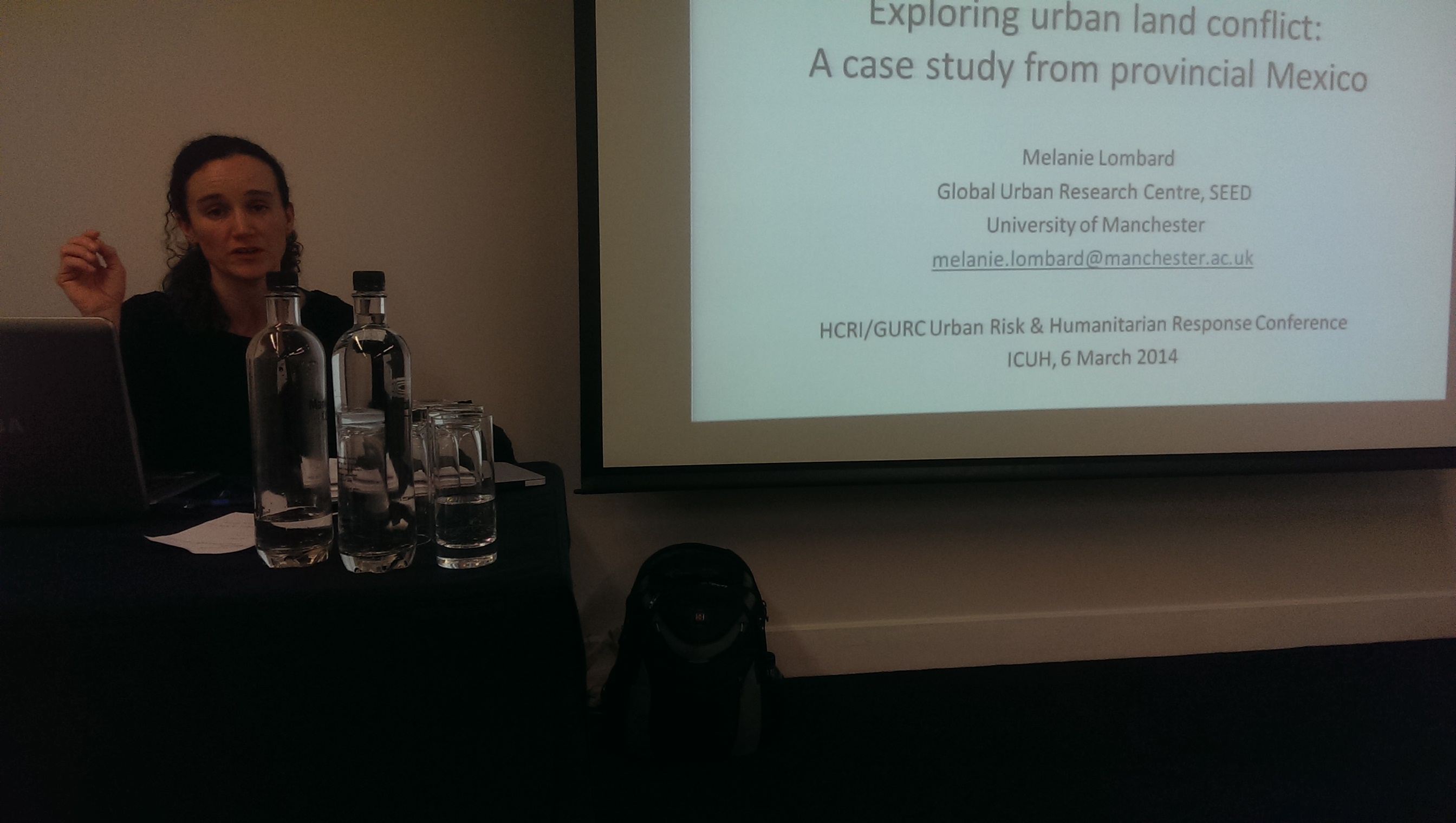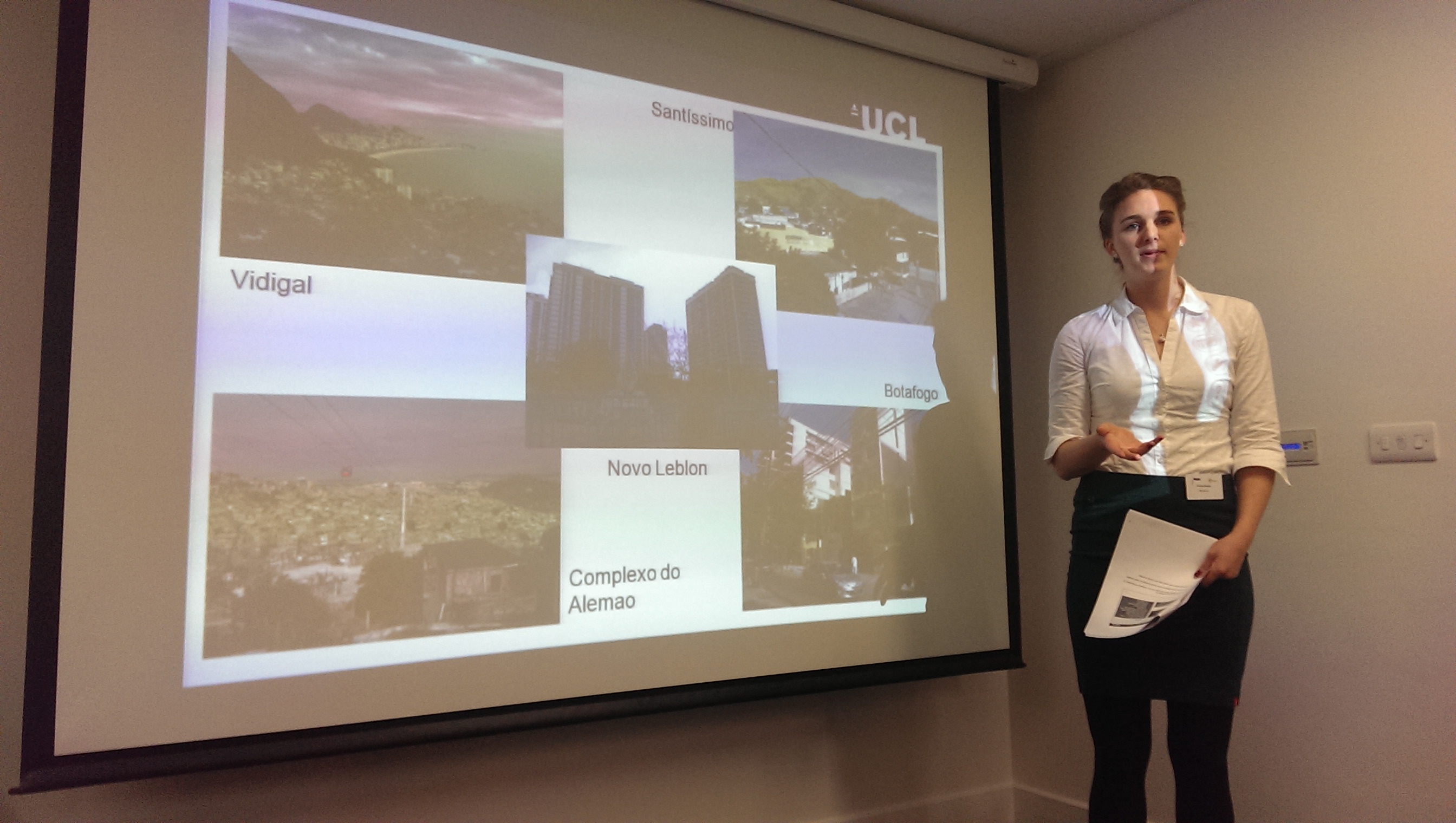International Conference on Urban Health 2014 Day 2
Asking the right questions: What kind of research will actively serve to improve urban health?
 This mornings opening plenary featured keynotes by Dr David Satterwaite (International Institute for the Environment and Development) and Professor Ana Diez Roux (Drexel University). Both focus on the role of research in improving health.
This mornings opening plenary featured keynotes by Dr David Satterwaite (International Institute for the Environment and Development) and Professor Ana Diez Roux (Drexel University). Both focus on the role of research in improving health.
Professor Satterwaite was asking Why is health so poor in the Global South after 60 years of humanitarian interventions? Despite over half a century of development assistance, in many countries in the Global South, 1 in 5 infants are still dying before the age of 5. In light of this lack of progress, Professor Satterwaite asks why most of the research into causes of death is conducted with the aim of being able to make global comparisons, rather than generating localised, relevant knowledge. Without this specific local information, there is no way development practitioners, urban planners, or local governments, can target the right policies at the right areas of their locality. He proposes that the way forward is to garner the unique knowledge of the poor themselves to form the basis of local partnerships between community organisations/ social movements within poor urban areas and their local governments. We wonder can participatory research work in areas where the power relations between government actors and non-state actors are abusive/oppressive? Does participation, as a policy-relevant research method, focus too much on the agency of the poor themselves, therefore initiating policies which are blind to the structural inequalities actually keeping people in poverty?
Following on from this, Professor Roux’s keynotes called for innovations in research methodology in health research. She demonstrates that a lot of health research is linear it aims to reveal or demonstrate a causal relationship between one variable and another, often through data-gathering in experimental settings. In contrast to this so-called reductionist method, she makes a compelling case for a systems approach in health research. Less concerned with proving a causal relationship between two variables, a systems approach is sensitive to the multitude of factors which affect health and can present findings which are demonstrative of feedback (as opposed to causal) relations between the numerous components in the system. Especially within the context of a conference where the somewhat vague subtitle of crossing boundaries has not really shone through so far, this refreshing keynotes provided a clear strategy for change rather than a business as usual approach.
Whose role is it anyway? Sharing responsibility for the urban poors health
The keynotes speeches had left me wondering about the question of responsibility – who is responsible for improving the health of the urban poor. Is it the poor themselves? Their local governments? National governments? International NGOs? Local NGOs? If it is a combination of any of the above, how can that shared responsibility be managed? The session on Stress in the City provided some interesting approaches to this question.
Women in Informal Employment: Globalising and Organising (WIEGO) presented on their work with market traders, street vendors, home based workers and domestic workers in urban townships in South Africa. Following that Dr Selmin Jahan spoke about water and sanitation facilities for the urban poor in Dhaka. The session closed with Dr Helen Elsey speaking about a Healthy Kitchens, an initiative which identifies interventions to improve health in urban slum kitchens. All of these presentations were about projects seeking to improve the health and safety in informal, unregulated urban settings where people are exposed to a multitude of risks including lung disease, gastrointestinal disease, burns etc. All three projects are asking how do we extend health and safety policies to urban informal settings? How can they be included in urban planning? How can we minimise health and safety risks in informal settings? In WIEGOs case, they have developed a piece of research in partnership with the market traders which outlines a zonal health and safety plan for their workplace. As well as providing education and training, they have overseen the installation of a risk management sub-committee among the traders. For the healthy cities initiative, the targeted intervention is to replace open fires and gas in kitchens with a safer alternative.
These projects placed a lot of the responsibility for improving health and safety on the urban poor themselves the aim of these projects was to empower the urban poor to take the appropriate actions and establish the appropriate systems for improving health and safety using the resources available to them. However, they also recognised that these measures can only go so far without the local governments also taking responsibility to protect their citizens. In WIEGOs project in particular, the difficulty of making this shared-responsibility work shone through. They recognised the need to negotiate the unequal power relations between governments and their poor citizens and interestingly, have themselves developed strategies to tread this contentious path towards partnership. These presentations about three fascinating projects demonstrated how small, inexpensive measures can be implemented by the urban poor themselves to improve their health and safety. However, unequal structures loom large: how can the poor empower themselves effectively in a broader context of disempowerment?
Climate Change: a universal threat?
During the session about climate change (CC) and urban insecurities chaired by Dr Dodman, three presenters, Mr Umamaheshwaran, Mrs Dang Thu and Dr Rais introduced their work. Their interesting speeches raised different issues caused by climate change impacts on urban areas. On the one hand, it can be understood that impacts such as flooding and/or the increase in temperatures (among many others), are faced by every city within every country. And within these cities, they severely affect particularly the health of the most vulnerable: the low-income communities. However, not every city has to face existing burdens that CC only exacerbates. For example, New-Delhi faces extreme problems of drinking water access, sanitation systems and air pollution caused by the dense traffic. Moreover, the health policies are not always being adequately implemented and the reaction time of the authorities when an epidemic occurs is too long.
Nevertheless, there are attempts underway to address these problems. Indeed, strategies to face climate change impact are implemented by NGOs such as Challenge to Change (Mrs Dang Thu), by providing support to the most vulnerable groups in Vietnam to implement strategies to mitigate and adapt to these impacts. On the other hand, more technological solutions such as projects from Taru (Mr Umamaheshwaran) are also being implemented in Indore. By supporting a new management system and software for the health practitioners, this organisation helps to monitor the spreading of disease and allows following in real time the epidemics.
The second session about climate change, chaired by Dr Alfredo Stein, also introduced some very interesting topics. Starting with the presentation of Dr Jemery Carter from the University of Manchester, the session first focused on climate change impacts and adaptation responses in Greater Manchester. Dr Carter pointed out the existing connections of the previous concepts with people health and well-being. He emphasised the creation of green infrastructure as a solution to face impacts such as flooding and heat wave. However, the infrastructure promoted might be efficient in a context of Manchester, but would not benefit from the same efficiency in Indian cities, for example.
Mr Brown and Dr Dodman propose a different approach of climate change. They argued that climate change research has been often considering it as top-down approach and focusing on hazards themselves. Hence, challenging this view, the vulnerability of the urban poor is the focus of their research.
The last presentation, given by Vikai Desai, focused on her experience in Surat city, which experienced strong flooding. As an impact of flooding, the city witnessed the arising of a new disease: leptospirosis. Facing this new challenge, an innovative monitoring and control system had to be implemented. Not only people, but cities as a whole have also to adapt to the new challenges arising from climate change direct and indirect impacts!
Finally, these sessions allowed the understanding of the multi-disciplinarity of climate change and multi-faceted impacts. CC creates strong challenges for urban health and development actors, as well as for the inhabitants of those cities. Practitioners and academics must work together to build a brightest and healthiest future.
Aiding violence? Urban violence and humanitarian responses to it
One of the HCRI/GURC sub-conference sessions was Urban violence and conflict: Exploring the response to urban violence with the participation of Elena Lucci (via skype), Verena Brahler, and Dr Melanie Lombard.
Elena Lucci opened the session with the intervention Humanitarian Action in the context of urban violence drawing on the lessons emerging from case studies based on humanitarian aid in urban settings experiences. She started by asking the question What is urban violence and why is it important for humanitarians? She defined urban violence and then asserted that the characteristics such as dynamism, density and diversity or urban centres, can create enabling environments for violence. There are important lessons from her experience in humanitarian aid. For example: ensuring clear aims from the beginning must a priority; also, acting strategically to develop capacity and linkages in the community that is being served; thirdly, taking a localised approach to violence and to developing the specialized skills that are needed to respond to urban crises.
Following this, was Verena Brahler from UCL, with ‘Inequality of Insecurity in Rio de Jainero, Brazil. Verena presented the results of her PhD Research. She used a mixed methods approach and, on this occasion, she talked about the quantitative part. Her analytical framework is based on the concepts of inequality and security. Additionally, she measured social cohesion and perceptions of insecurity through a series of surveys in the favelas and compared the security provision between low and middle-income neighbourhoods. To end such an interesting discussion, the audience contributed to the dialogue with questions about the role of the state in security provision in Brazil. She argues that in the absence of the Brazilian state as a provider of security, poor people have to accept to live side by side to criminals, respecting a silence code in exchange for minimal security provision.
Last but not least, Dr Melanie Lombard explored urban land conflicts with a case study from provincial Mexico. Dr Lombard provided key concepts about land disputes, and conceptual differences between conflict and violence; in Santa Lucia the case study the situation of many urban settlements in Mexico is exposed: land is available but unaffordable. As a result, colonias populares or peri-urban settlements arise from the illegal subdivision of previously community-owned land (ejidos). Conflict appears when, under the absence of state presence and a normative dissonance (since the land was neither claimed to be rural nor urban), the interests of key actors, including the state, urban political leaders and local associations clash. She concluded asserting that When violence is used as a tool by actors struggling for political or economic power, conflict over land is more likely to escalate and the urban poor communities are more likely to be adversely affected.
 This was indeed a very intense and stimulating session. Thanks to all the participants!!
This was indeed a very intense and stimulating session. Thanks to all the participants!!



0 Comments